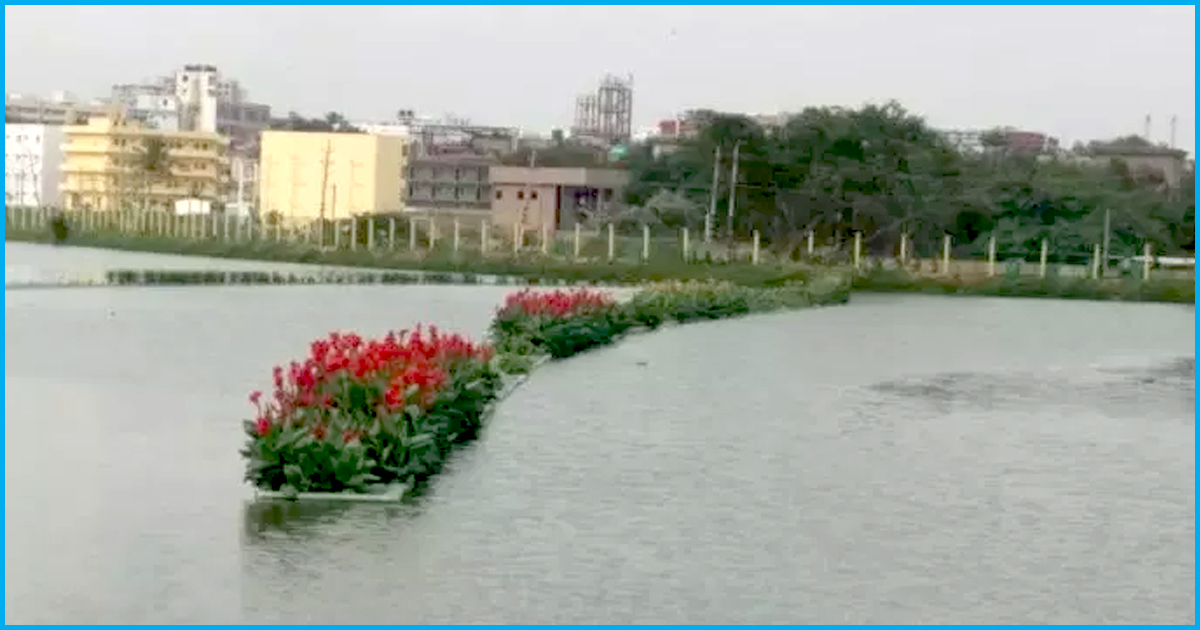Once a garbage dump, Bengaluru’s Hebbagodi lake has now entered the Limca Book of Records for having the largest floating island in India.
The lake revival project
The 12,000-sq.ft island in Electronic city comprises of vegetation across the water body. Plants in the island grow hydroponically with the help of rafts and also act as cleaning agents. Reused PVC pipes are used to build the floating rafts.
The aim of growing plants through mineral nutrient solutions and without soil is to improve the quality of water by eliminating excess nutrients. The aim is also to maintain the water’s ph level between 6.5 and 8.5, which is considered normal. Pollutant-digesting microbes in the roots of the plants, degrade pollutants in the wastewater flowing into the lake.
Once a garbage dump in Electronic city, Bengaluru, this lake now has a 1200 sq.ft raft-like island that allows plants to grow hydroponically (without soil and with the help of nutrients) and act as a cleaning agent.
The Logical Indian ಅವರಿಂದ ಈ ದಿನದಂದು ಪೋಸ್ಟ್ ಮಾಡಲಾಗಿದೆ ಬುಧವಾರ, ಡಿಸೆಂಬರ್ 12, 2018
The lake is spread over 35 acres and has a perimeter of 2 km, and is located in Bengaluru Urban district’s Anekal taluk, reported The Times Of India. In August 2016, the lake revival project was taken up by Biocon India, along with its subsidiary Syngene International. It was taken up under their corporate social responsibility programme. The lake comprises two stormwater inlets and from residential areas, five sewage inlets.
Downstream of Shikaripalya, Tirupalya and Veerasandra lakes and upstream of Kammasandra Lake, Hebbagodi Lake’s restoration began after a pact was signed by Biocon Foundation with the state government for lake restoration in October 2017.
To cover the lake in greenery, de-weeding began. In order to increase dissolved oxygen level in water, installation of energy-efficient cascading aerators was carried out. Sewage spills and stench were addressed by underground conduits. Construction of a culvert was carried out for preventing excess sewage flow. Using 67,000 cubic metres of soil, a 1.5 km bund was created which ensured that the lake’s water-holding capacity was augmented. Playing a major role in the revival of the lake, wing commander (retd) GB Athri said that it is the citizen who should maintain the lake.
Other lakes to be revived
Now, Kammasandra and Bommasandra lakes will also be taken up by Biocon Foundation. “Our aim is to rejuvenate Kammasandra Lake as it is slightly larger. Other companies should adopt it,” said its managing trustee Kiran Mazumdar-Shaw.
Bengaluru has 34 lakes now, but earlier, in 1960, it had 250. Shaw said that it must be ensured by the government that lakes are revived. All stakeholders, including citizens, politicians and government officials, must start taking ownership of the lakes.
The Logical Indian appreciates the effort put by every stakeholder to rejuvenate the beauty of the lake. We hope Bengaluru gets back the lakes that have been lost due to negligence, concretisation and pollution.
Also Read: These Two School Kids Have Invented An Innovative Device To Protect Bengaluru Lakes












